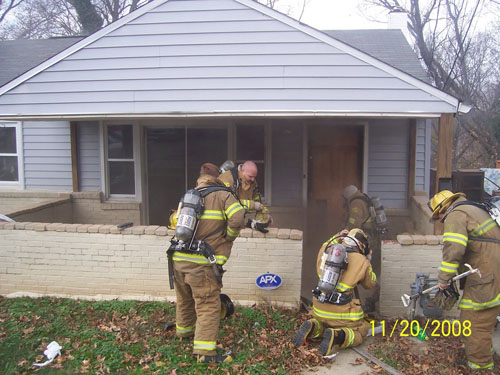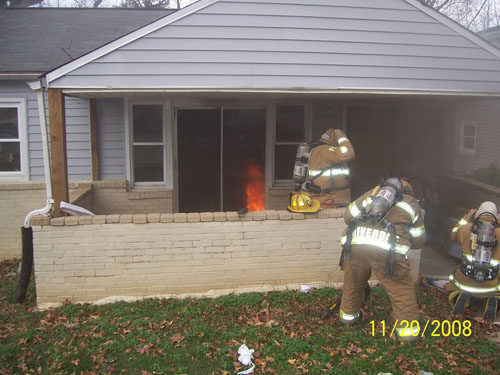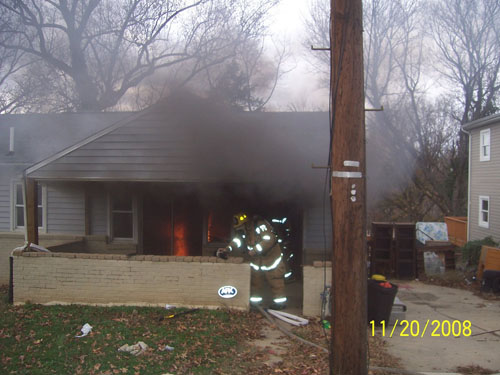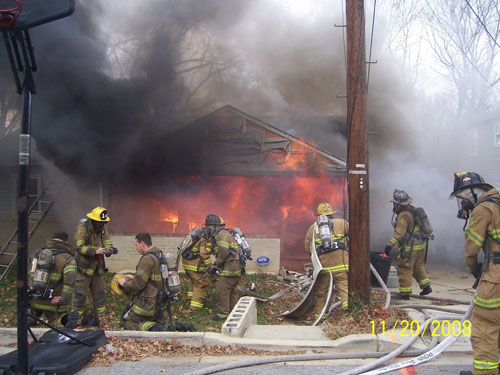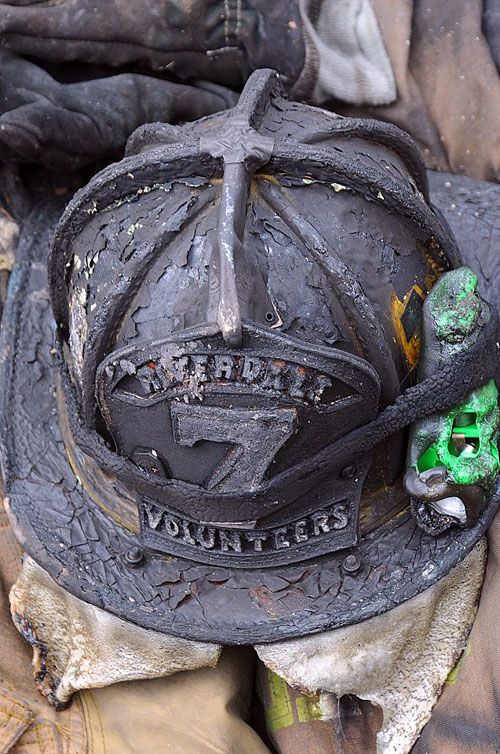
Photo by Mark E. Brady, Prince Georges County Fire/EMS Department
Experienced Judgment
Firefighters frequently base their expectations of how a fire will behave on their experience. Wildland fire scientist Harry Gisborne’s1948 observations about wildland firefighters experienced judgment can be paraphrased to apply to structural firefighters as well:
For what is experienced judgment except opinion based on knowledge acquired by experience? If you have fought fires in every type of building with every different configuration and fuel load, under all types of conditions, and if you have remembered exactly what happened in each of these combinations your experienced judgment is probably very good
Unfortunately this is rarely the case. Firefighters and fire officers often have limited experience and do not have sufficient understanding of fire dynamics to recognize potential for extreme fire behavior.
Riverdale Flashover
Two firefighters from the Riverdale Volunteer Fire Department in Prince Georges County Maryland recently were surprised by a flashover in a small, single family dwelling. Probationary Firefighter Tony George captured initial operations in a series of four photos taken over a period of two minutes.
In the first photo, firefighters from Engine 813 and Truck 807 prepare to make entry. Note that the front door is closed, the glass of the slider and windows are darkened, and smoke can be observed in the lower area of the front porch.
- What can be inferred from these observations?
- What is the stage of fire development and burning regime?
Six seconds later it appears that the front door has been opened, flames are visible through the sliding glass door, and the volume of smoke in the area of the porch has increased. However, the smoke is not thick (optically dense).
- Has your perception of fire conditions changed?
- Why did fire conditions change after the door was opened?
Forty eight seconds later, as the crew from Truck 807 makes entry to perform horizontal ventilation the volume of smoke from the front door increases and thickens (becomes more optically dense). The crew from Engine 813 experiences a burst hoseline, delaying fire attack.
- If the fire was ventilation controlled prior to opening the door, how are fire conditions likely to change?
- If the truck crew increases ventilation by opening windows, how will this influence fire development?
- What is the potential impact of the delay in deployment of a hoseline to attack the fire?
Two minutes after the first photo, and shortly after the crew from Truck 807 made entry, flashover occurred.
According to a press release from Prince Georges County Fire/EMS Department Chief Spokesperson Mark Brady:
The engine from Riverdale Heights arrived first and advanced a hoseline to the front door and paused to don their personal protective equipment (PPE) and self contained breathing apparatus (SCBA). The house was vacant and a small fire could be seen in the front living room. The ladder truck from Riverdale Fire/EMS Station #807 was the second to arrive, almost at the same time as Riverdale Heights. The crew from Truck 807 donned their PPE and SCBA and entered the structure to begin ventilation by removing windows. As the engine crew from Riverdale Heights prepared to enter the structure and extinguish the fire their hoseline sustained damage from glass or debris and was cut; rendering it useless. As additional arriving firefighters stretched another hoseline into position, a flashover occurred.
Two firefighters involved in this incident were seriously injured, FF Johnston was treated and released. FF Blazek was admitted to the MedStar Burn unit. Visit the Riverdale Volunteer Fire Department Web Site for updates on FF Blazek’s condition.
Things to Think About
Near misses and injuries such as occurred during this incident happen all too frequently. All too often, firefighters and officers consider this to be part of the job. Fire behavior is extremely predictable. It will do the same thing every single time under the same conditions. The problem is that the conditions are seldom exactly the same and our experienced judgment is not perfect.
What can you do to reduce the risk of being surprised by extreme fire behavior? Become (or continue to be) a student of your craft and develop an improved understanding of fire dynamics and the influence of tactical operations on fire behavior. Practice reading the fire (see my earlier post Reading the Fire: B-SAHF) using photos, video, and every fire you respond to.
Ed Hartin, MS, EFO, MIFireE, CFO
